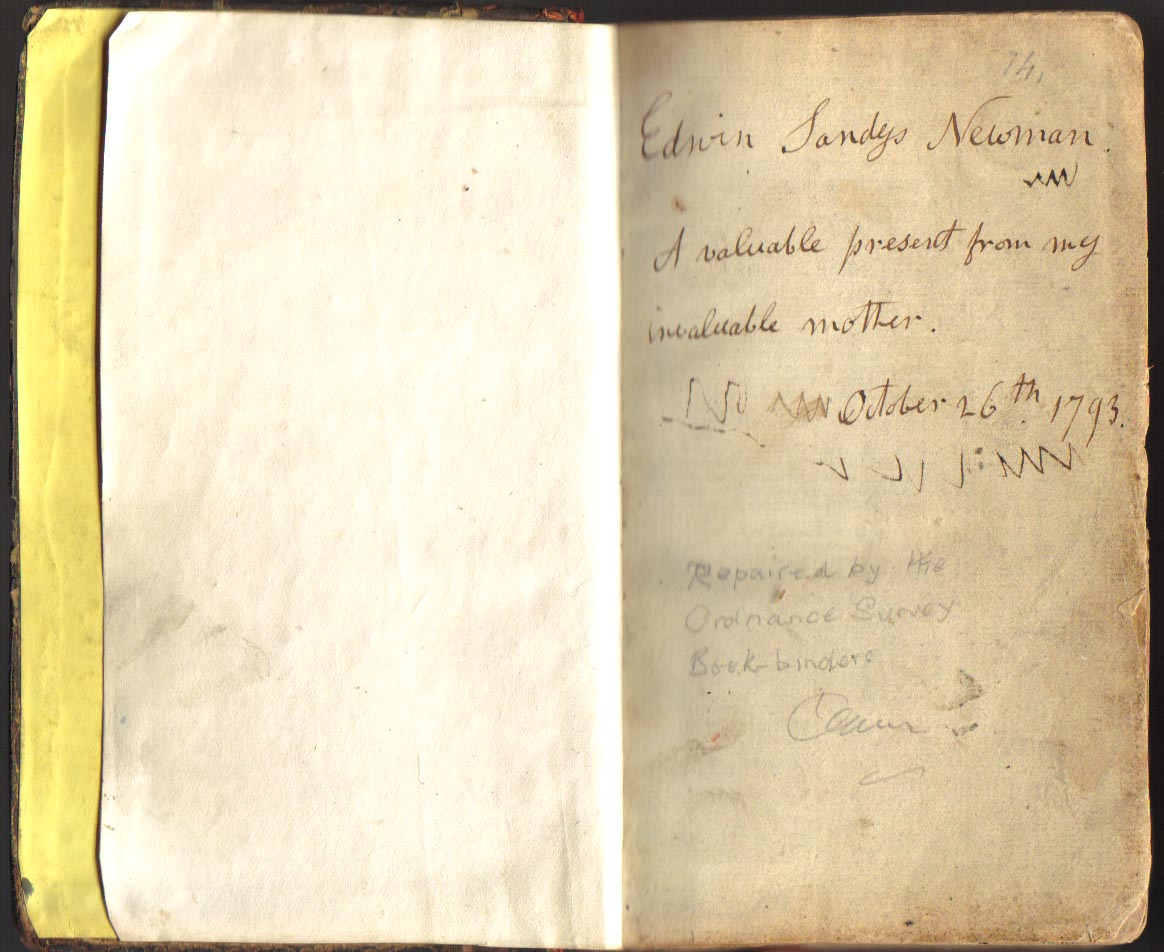
In addition to the Newman-Rogers Bible that is described elsewhere, there is also an old Bible dating back to 1783 that was handed down to me, together with a prayer book dated 1642.
The bible is inscribed by Edwin Sandys Newman, describing it as "a valuable present from my invaluable mother. October 26th 1793". Perhaps it was a 30th birthday present.
The prayer book is much older, dated 1642, but there is no inscription that gives a clue as to whose possession it was. A short commentary has been added (below) describing the book and the history surrounding its publication.
Edwin Sandys Newman's 1793 Bible
(inside the front fly-leaf)

1642 Prayer Book
(inside front cover)
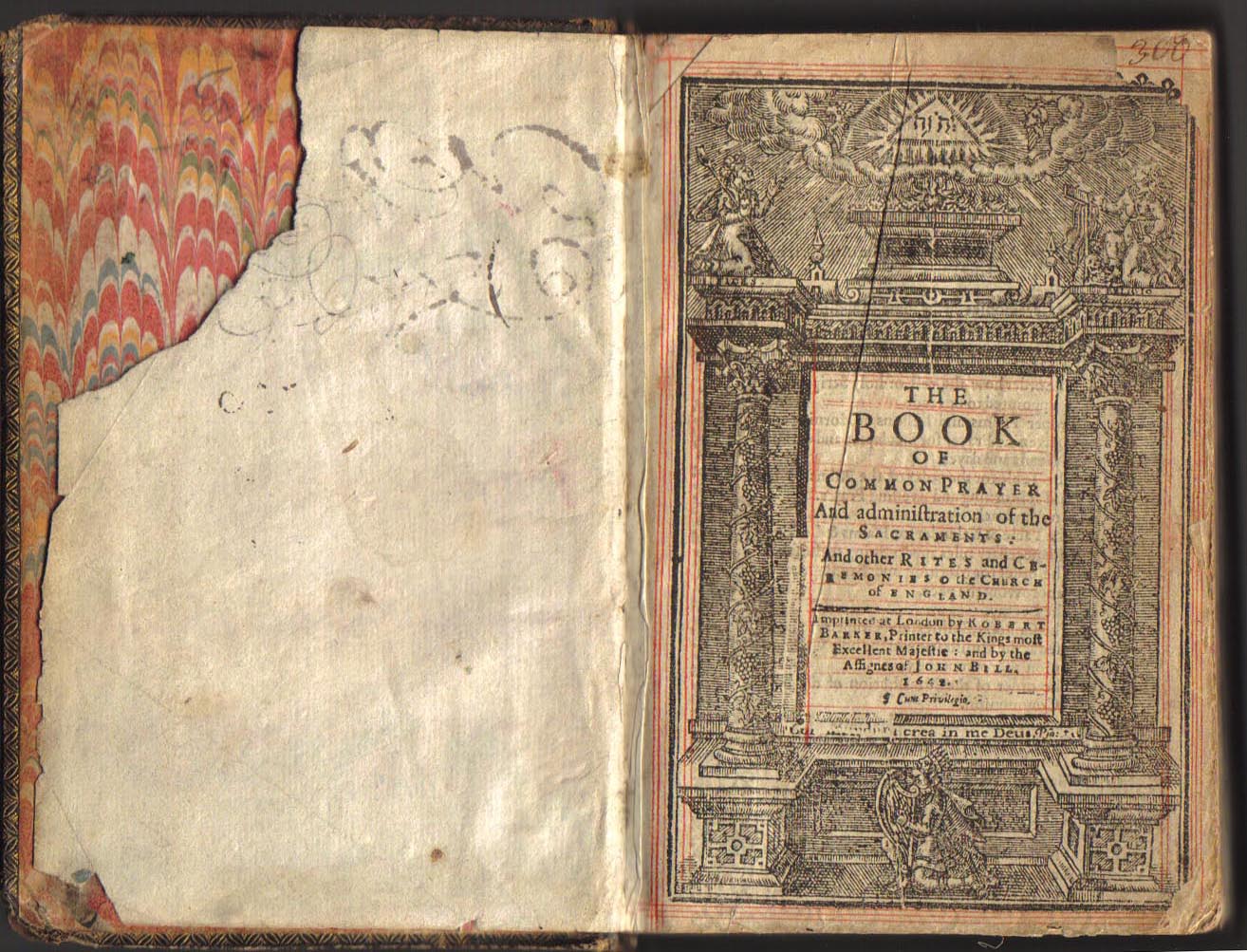
This beautiful leather-bound book was published in 1642, the year that the English Civil War broke out. The war was largely brought about by King Charles I attempting to impose the strictly defined practices of the Church of England throughout his realm, which many citizens (especially the Scots) suspected as a means re-imposing of (hated) Catholicism by the back door.
The Prayer Book opens with a listing of “the Contents of the Book”, beginning with “an Act (of Parliament) for the Uniformity of Common Prayer and Service”. This would be the 1558 Act that was brought in immediately after the death of (Catholic) Queen Mary when Anglican rule was re-established under her sister Elizabeth.
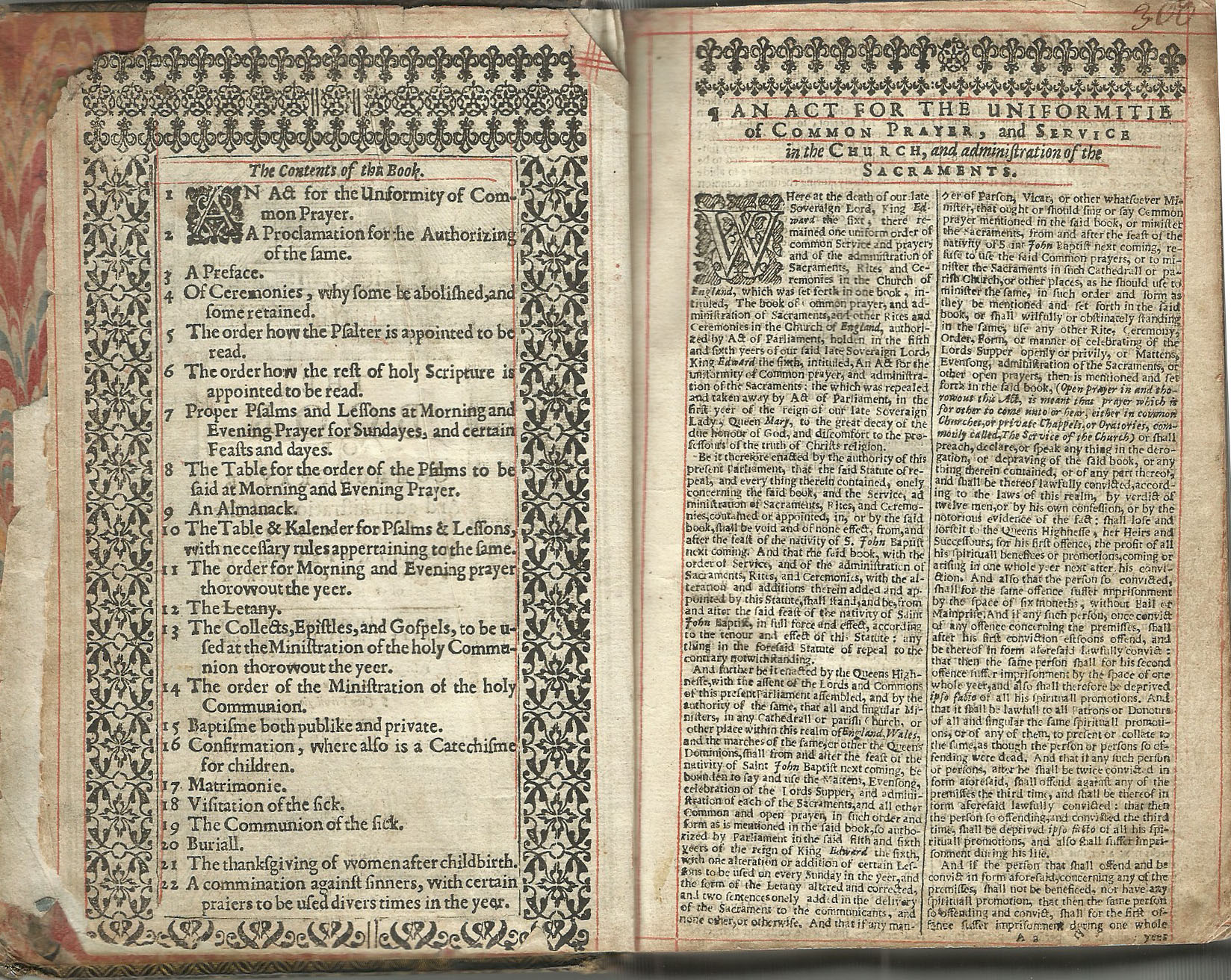
In 1604, following the death of Elizabeth and the succession of James I, further changes were made to the Prayer Book to appease Puritan demands, and the second part of the book contain the words of the 1604 proclamation by the (then) new king authorizing the publication of the revised book. (The 1558 Act remained on the statutes until 1650.)
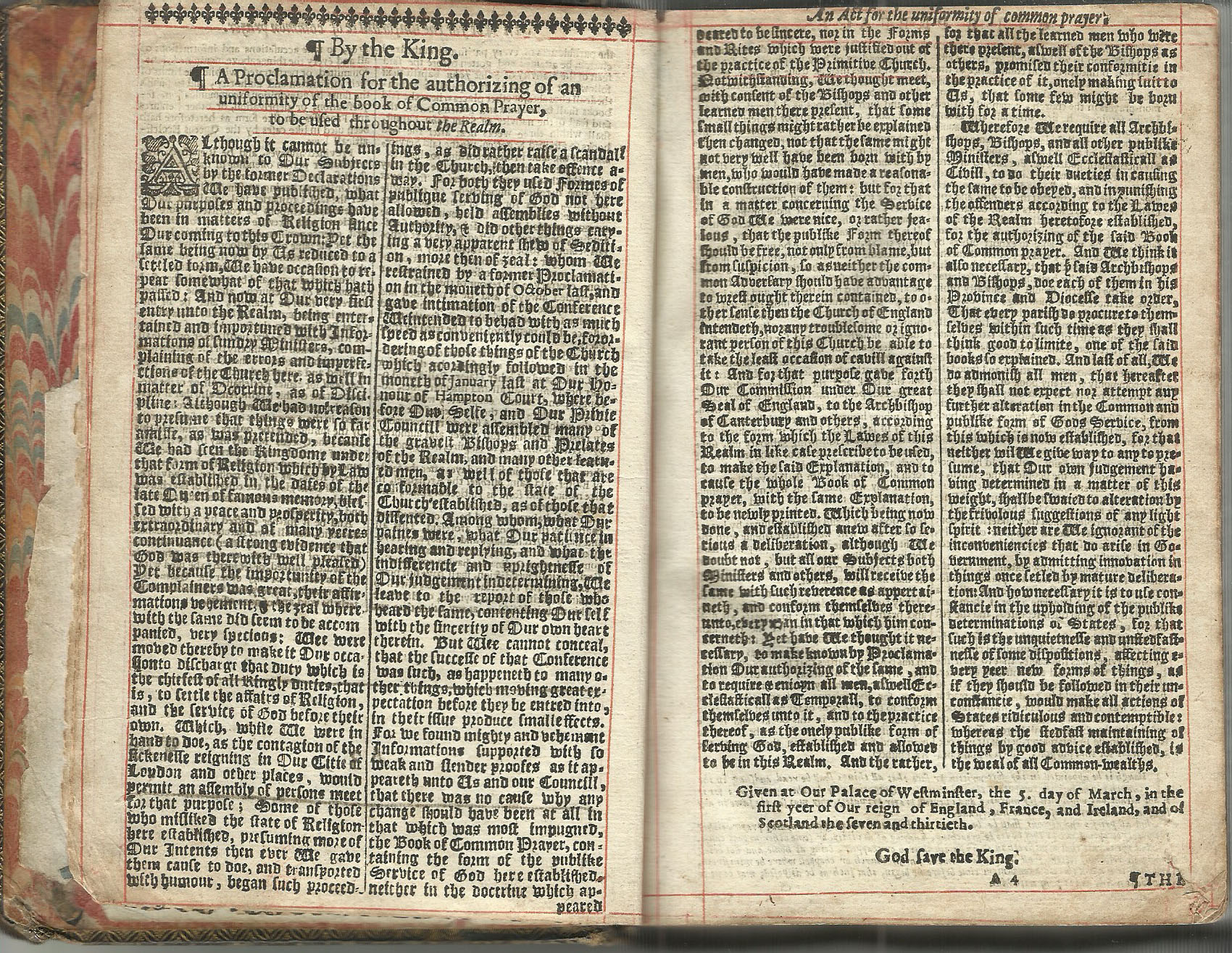
There follows two pages of explanation about the new book starting with a Preface followed by an explanation why some ceremonies “be abolished and some retained”. This is followed by several pages defining how services are to be conducted, the order of Psalms and readings from the Holy Scriptures, and an Almanac specifying the order of services to be followed for the next 38 years.
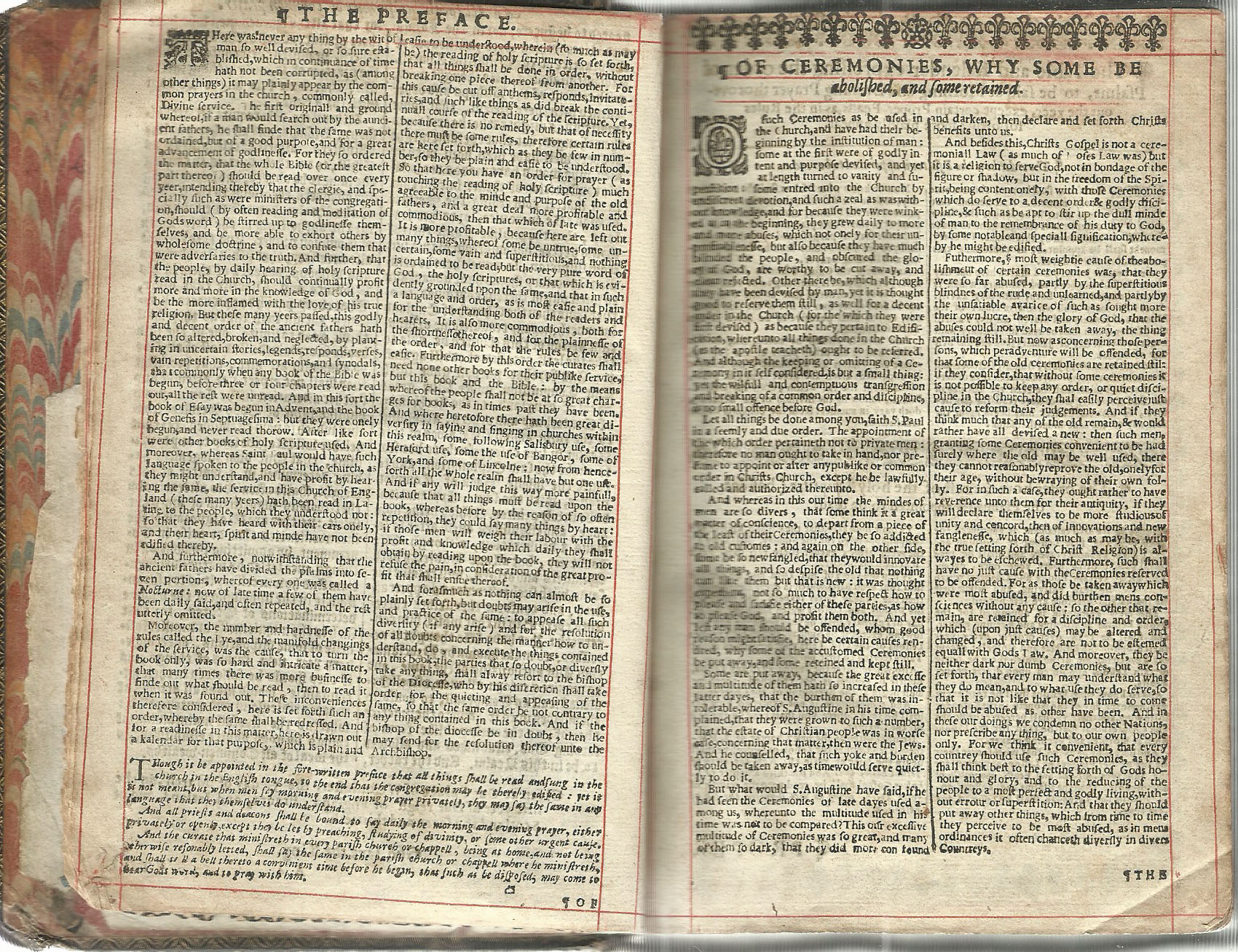
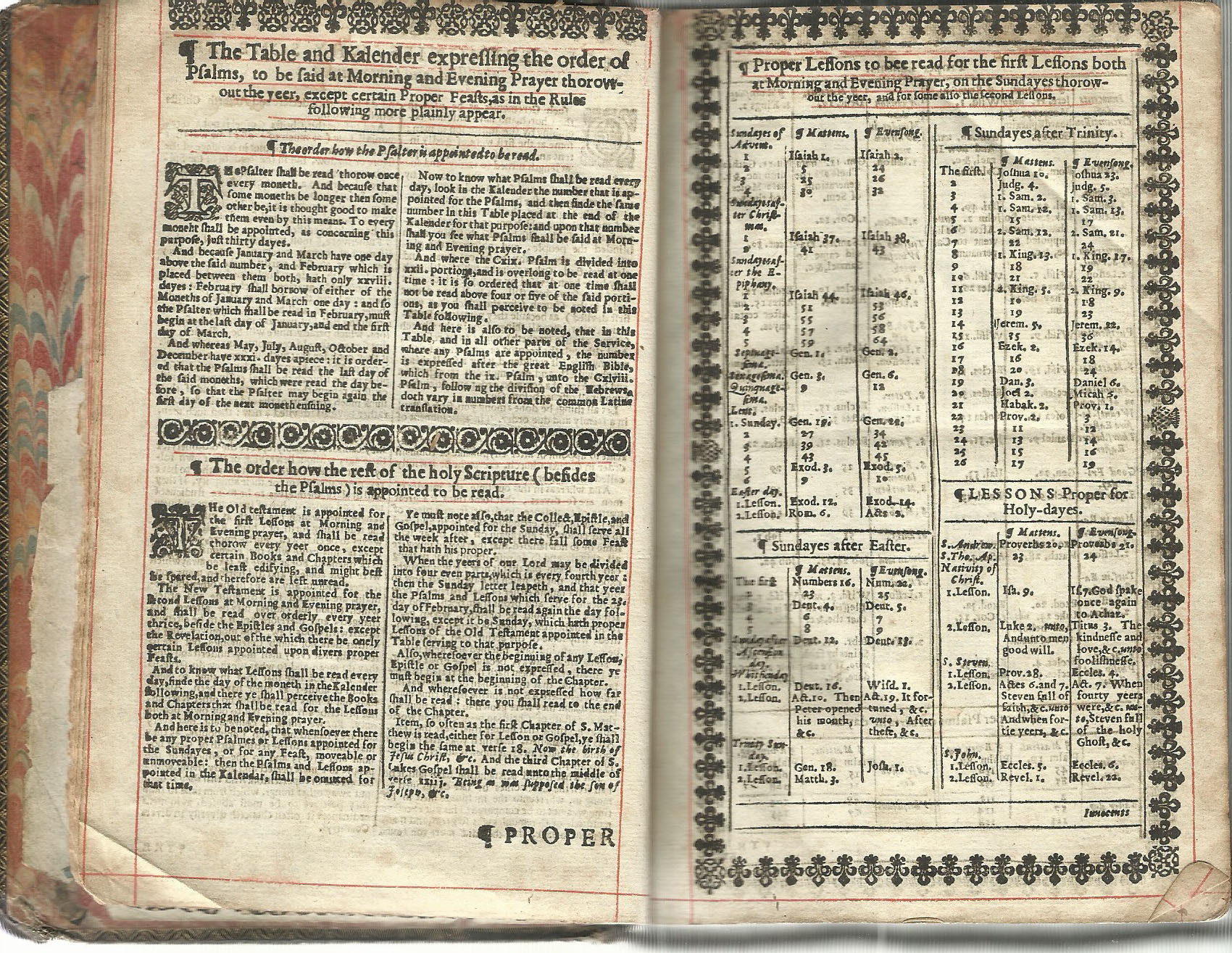
It was this strict regimentation and the demand for obedience in worship that Charles I attempted to impose on the Scottish (Presbyterian) "Kirk" in 1637 when he attempted to introduce the English Prayer Book into Scottish services. This resulted in a famous riot in St Giles’ Cathedral in Edinburgh, when prayer books and a stool were hurled at the minister. When similar protests erupted across the land, Charles endeavoured to impose his will by force, resulting in "the Bishops War" in which the Scots quickly prevailed. As a consequence, the king was weakening both financially and personally, opening the door to English Puritans who took advantage of his situation to press for greater powers for parliament. This in turn led to the English Civil War of 1642, and ultimately to the execution of Charles I in 1649.
This little Prayer Book therefore dates from a critical and formative period of English and Scottish history that had ramifications that are still being felt today.
The provenance of the book is unknown, but it’s possible
that it has been passed down through the generations from Col.
R ichard Newman who was a strong supporter of the king during the Civil
War.
Updated 3rd August 2016 - description of Prayer
Book added.
Page created 28 June 2005